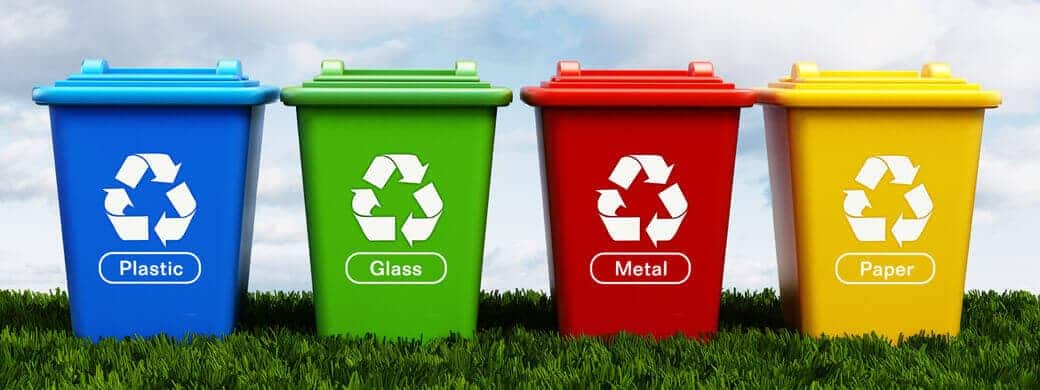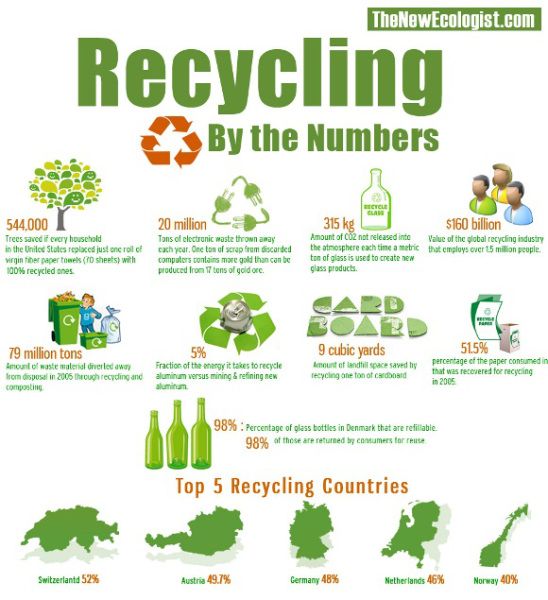Recycling is an integral part of a sustainable lifestyle and an incredibly important part of limiting the overtaxing of resources caused by society’s demands. Many, if not most, people are familiar with the concept of recycling and have likely recycled something themselves. But, statistics show that the average person is throwing away over four pounds of recyclable waste each day. A deeper understanding of the importance and benefits of recycling can help one stay on track with their recycling goals. This article will share some information on the impact recycling – and not recycling – has on the environment to help illustrate the need to rethink how we get rid of our waste.
Sobering Statistics on Landfill Waste
In 2010, 1.1 billion dollars worth of aluminum cans was thrown away instead of being stored for recycling. A can of soda isn’t terribly expensive, so imagine how many cans must be thrown in the trash instead of the recycling bin to create that dollar amount.
Almost 30 million tons of plastic were created in the United States. Only 2 million tons was reclaimed through recycling.
In 2009, only 8% of phones no longer in use were recycled. In the same year, only 17% of televisions and 38% of computers at the end of their useful “lives” were recycled. Electronics like cell phones and laptops are in the hands of the majority of Americans and are replaced often, so it’s easy to see how recycling them instead of throwing them in the garbage would make a big dent in electronics waste in landfills.
Paper is one of the easiest things to recycle, but in the United States over 2.8 billion dollars worth of paper was thrown away in 2010. 87% of Americans have a curbside recycling drop-off facilities or curbside pickup of recyclables, so this number could be much lower. It takes 24 trees to produce one ton of non-recycled paper.
Plastic bag recycling jumped 31% from 2005 to 2009, but nearly 3500 tons worth of plastic bags were thrown away in 2009 alone. This is leading to the buildup of massive floating collections of plastic in our planet’s oceans, and one of the reasons why it’s especially critical that coastal communities recycle plastics whenever possible.
One final fact: In 2009, the population of the United States generated enough unrecycled trash to circle the earth 24 times.
How Recycling Helps Ease Environmental Burdens
Looking at the above statistics, it’s easy to see how eliminating that waste would help ease the environmental burden of so much trash going to landfills. But, according to Wade Architectural Systems (www.wadearch.com), the benefits of recycling go way beyond simply eliminating waste. It also cuts down on energy use and environmental pollution and protects plant and animal habitats, along with many other benefits. Let’s look at a few recyclable materials and their environmental impact in detail.
Energy Consumption Saved by Recycling
Using recycled material instead of raw material in production uses less energy. Glass melts at a lower temperature, saving energy that would have been used to attain a higher temperature. The amount of energy saved from recycling aluminum cans in 2010 was equal to 17 million barrels of crude oil or, nearly two days worth of all oil imports in the U.S. Recycling just one aluminum saves as much energy as it would take to run a television for three hours.
Greenhouse Gases Reduced Through Recycling
Lower energy consumption brought about by using recycling material instead of raw material in turn lowers greenhouse gas emissions. One example of this is glass. If is used in place of new material, it saves energy because it melts at a lower temperature. A lower melting temperature also means emitting less of two major greenhouse gasses, carbon and nitrogen oxide. In the United Kingdom, recycling efforts have helped save 10-15 million tons of CO2 equivalent each year.
Natural Resources Preserved
From water to trees to ores, precious natural resources are conserved through recycling. By using recycled material when producing new batches of paper, metal, and other products, less energy is used and fewer ores, minerals, trees, and gallons of water are eliminated from the environment. For instance, one ton of scrap from personal computers houses more gold than can be obtained from 17 tons of gold ore. The amount of concentrated copper found in these PCS is 40 times higher than in copper ore.
It’s easy to see just from this small sampling of statistics and recycling information just how important it is to our environment to recycle our waste. While the United States has improved its rate of recycling, there is still much to be done. Luckily, there are more recycling programs in more places than ever to help each person reach their recycling goals.





